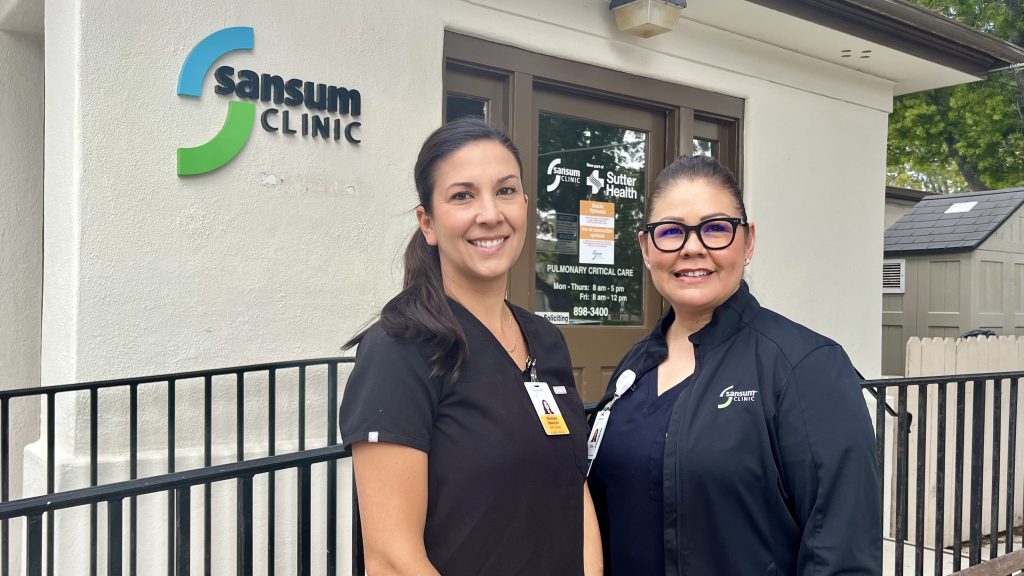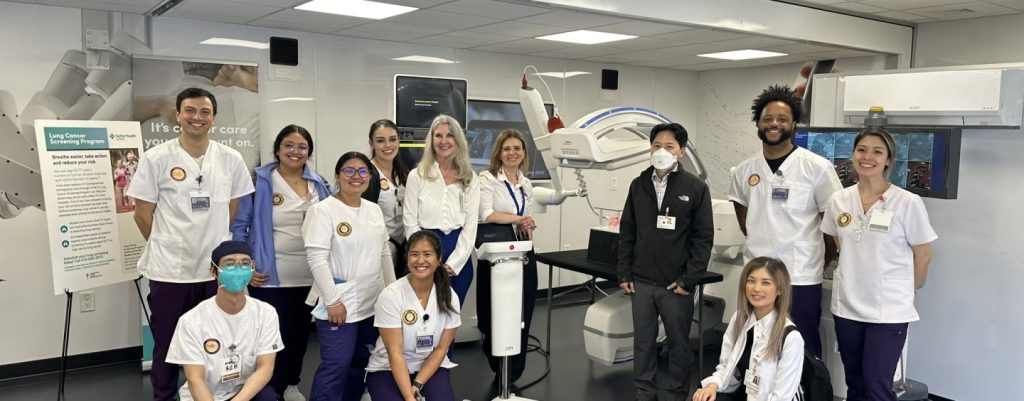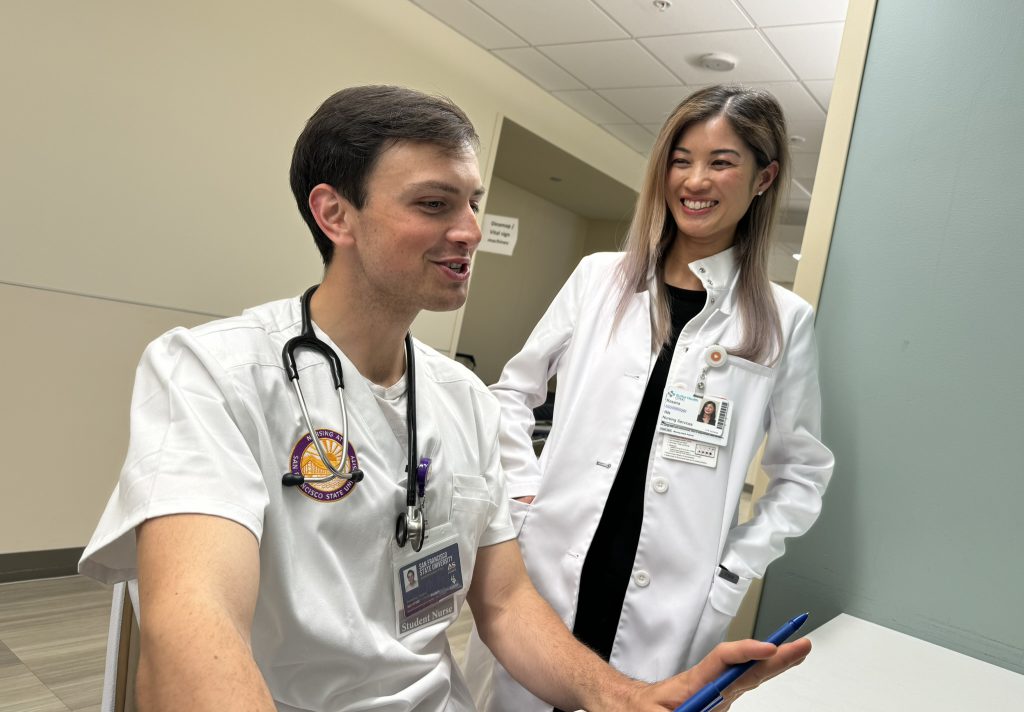There has been lots of discussion about how environmental factors can impact health. Poor air quality can affect respiratory conditions like asthma or COPD. Climate change-fueled weather events like heat waves may spur on heat strokes or other heat-related illness. However, the irony is that healthcare operations can impact the environment, potentially exacerbating some of the conditions clinicians are treating.
Healthcare organizations across the U.S. and around the world are examining ways they can make healthcare more environmentally friendly and sustainable. In advance of Earth Day, Vitals editors look at some efforts making a difference.
Extra Helpings of Hospital Food Nourish the Hungry, Stay out of the Landfill
The phrase “food is fuel” takes on a different meaning when it comes to the environment. When landfill food waste decomposes it generates greenhouse gases such as methane and carbon dioxide. Greenhouse gases are major contributors to climate change. Recent reports detail how methane rates are rising.
Sutter Health, a not-for-profit healthcare system in Northern California, saw an opportunity with their overproduced food. With the help of Copia, employees from 16 Sutter hospitals created a program to donate excess food to local nonprofits. The process involves kitchen staff recording and categorizing unserved, edible food, which is then chilled and scheduled for pickup using Copia technology. Independent food delivery services transport the chilled food to local nonprofits, usually within five miles of the hospitals.

Gabriel Pardo, food services worker at Sutter Davis Hospital, gathers leftover food for donation.
“This program effects change in multiple ways, first by helping reduce our carbon footprint through avoiding food waste,” said Jack Breezee, regional director of Food & Nutrition Services for Sutter Health. “Second, we help provide wholesome nutrition to those who are experiencing food insecurity, and we know that access to healthy food is a key driver of better health.”
Since 2020, the program has saved 871,000 pounds of carbon dioxide emissions by diverting food from landfills. The program has also helped Sutter Health donated 195,000 pounds of food to 80 nonprofit organizations, resulting in 162,000 meals served across Northern California. Health Care Without Harm, an international healthcare advocacy organization, recently highlighted Sutter’s efforts in a compelling video.
Anesthesia Alternative Offers Greener Option
General anesthesia is often used to help block patients’ sensory pain signals during surgeries. Not many people know that those volatile anesthetics are also potent greenhouse gases that are vented out of the operating room and into the atmosphere. Anesthesia’s global-warming properties vary depending on the type. The most common, desflurane, can last one to two decades within the atmosphere.
Anesthesiologists, the primary administrators of the drug, are some of those advancing the charge toward finding alternatives. Two of those doctors are from Sutter. Dr. Eva Hughes from Sutter Medical Center, Sacramento, and Dr. Tyken Hseih from Sutter’s Mills-Peninsula Medical Center in Burlingame, Calif., are leading workgroups to educate their colleagues and encourage them to use greener alternatives to desflurane, without compromising patient care. They estimate that by replacing desflurane with sevoflurane, Sutter can decrease greenhouse gas emissions (GHG) from volatile anesthetics by more than 90%. Sutter Medical Center, Sacramento stopped purchasing desflurane in 2021.
“It is increasingly apparent that human health is dependent on our planet’s health. As anesthesiologists we must take this opportunity to lead in the effort to decrease our carbon footprint,” said Dr. Hughes. “I am excited for the rest of Sutter to adopt this change. ”
Solar Panels Help Lighten Up Emissions
Solar panel installation is arguably one of the first and one of the most common ways the larger healthcare community has explored greener practices. And it is probably an area that has seen the most cumulative results.
Sutter Health launched a pilot program in 2017 to evaluate the effectiveness of solar panel installation at six hospital and care center locations. When the pilot concluded in 2020, Sutter officials calculated these clean energy installations reduce emissions that would equal eliminating over 17 million miles of vehicle travel each year.

Solar panels are placed throughout the campus of the Sutter Medical Foundation care center site at 8170 Laguna Blvd. in Elk Grove, Calif.
“We realized there was a lot of potential to make an even greater impact by expanding our initial program,” said Wayne Bader, energy manager for Sutter Health’s Facility and Property Services.
Sutter is currently amid its second phase, expanding the program to include 24 sites. Bader and his team estimate this phase can reduce emissions that would equal more than 33 million miles of vehicle travel. They are exploring a third and final phase that would include an additional 12 locations across Sutter Health.
Bader said Sutter is also evaluating its electricity resilience as it adapts to climate change. One potential opportunity is to help operations continue during extreme weather events by adding battery storage, which would also further enhance value of the solar installations.
“While we have made progress, there are still more avenues to explore when it comes to greener practices in healthcare. It is an exciting time,” said Bader. “Our efforts here are an extension of our greater commitment to enhance the overall health and well-being of those we serve. That makes this work very meaningful.”





